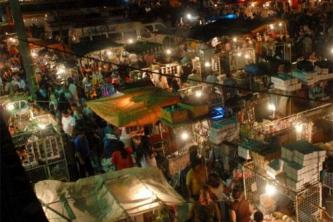
07 November 2017
Three times per week, traffic on the old railway bridge across the Riachuelco in Buenos Aires is dominated by a constant stream of long distance buses. The passengers have traveled hundreds of miles from every corner of Argentina, and from neighboring Paraguay, Brazil and Chile. Unable to afford the plane fare, a one- or two-hour flight turns into ten, twenty, even thirty hours by bus. The bridge, finally, signals the end of their journey: on the other side of the oily, junk-filled river, a huge parking lot welcomes visitors to La Salada, Latin America’s largest low-cost garment marketplace.
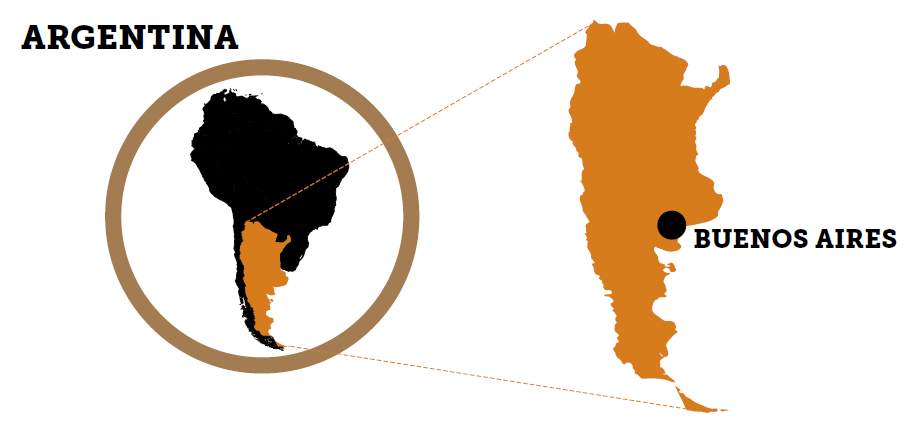
Three times per week, traffic on the old railway bridge across the Riachuelco in Buenos Aires is dominated by a constant stream of long distance buses. The passengers have traveled hundreds of miles from every corner of Argentina, and from neighboring Paraguay, Brazil and Chile. Unable to afford the plane fare, a one- or two-hour flight turns into ten, twenty, even thirty hours by bus. The bridge, finally, signals the end of their journey: on the other side of the oily, junk-filled river, a huge parking lot welcomes visitors to La Salada, Latin America’s largest low-cost garment marketplace.
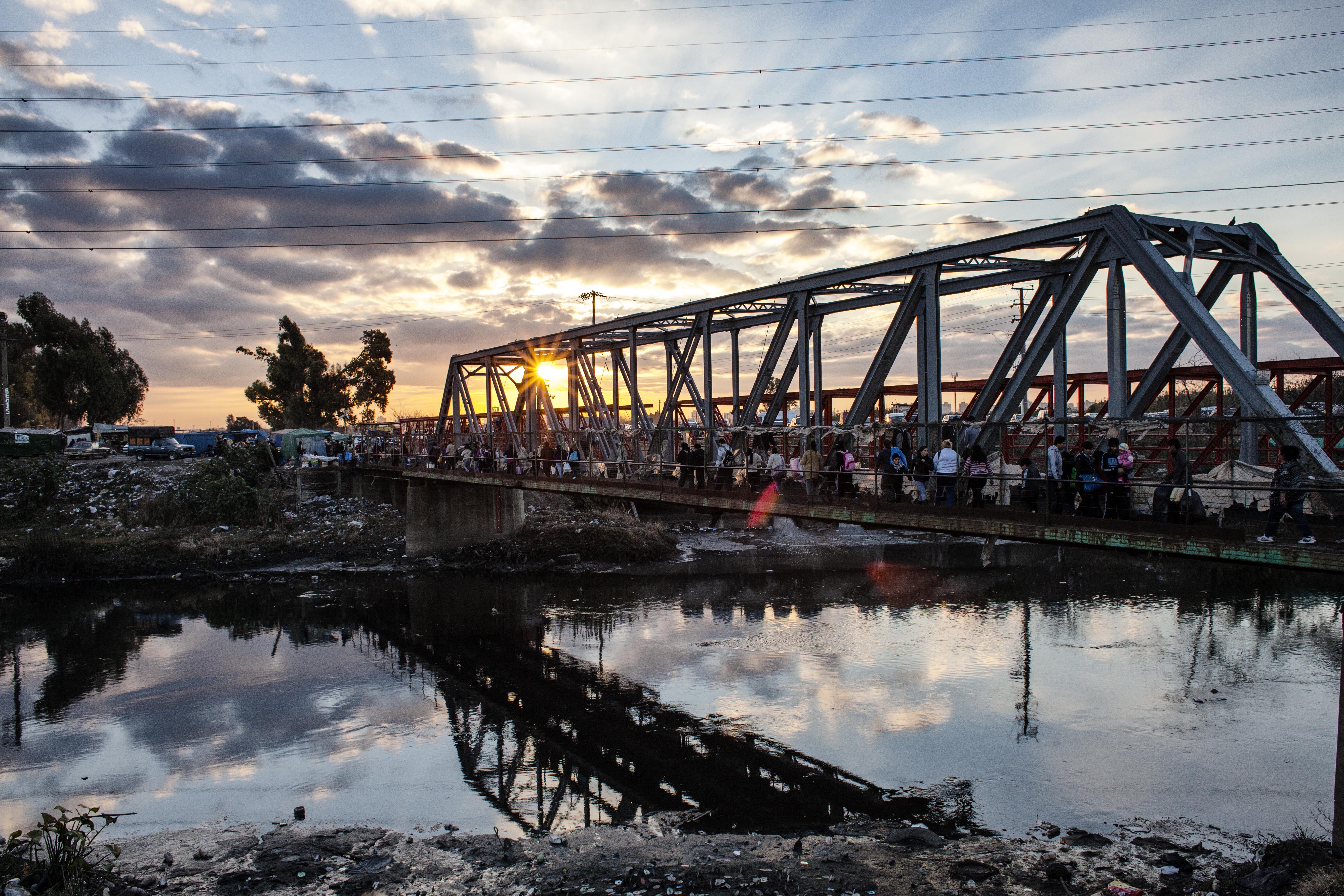
© Picture by Sarah Pabst
The passengers are no ordinary shoppers. The vast majority are wholesalers, come to buy garments by the fifty-kilogram-sack load to sell at smaller marketplaces back in their home towns and cities. The amount of choice is overwhelming, with La Salada’s nearly 8,000 stalls almost exclusively selling garments—from jeans and jackets, to shoes and socks, to aprons and towels, sportswear, workwear and nightwear, for men, women and children. About half of it is counterfeit, branded with famous logos such as Nike, Adidas, Puma and Disney. All of it has been manufactured in sweatshops.
The word “sweatshop” usually conjures up images of immense factories, where exploited workers work long hours in poor conditions for low pay, with no benefits and no job security. And when we meet Bolivian migrant Juan, and many others who work at La Salada, some of these notions are confirmed: sixteen-hour days, six-day weeks, the unsafe use of dangerous chemicals and machines, and rampant exploitation by people traffickers. Trafficked Bolivians arrive in Buenos Aires hoping for a better life, but instead have their passports confiscated until they clock up enough hours in the traffickers’ sweatshop to pay off their debts. Sometimes, people even exploit their own family members—Juan began by working in his uncle’s sweatshop, but the uncle ended up kicking him and his family out and stealing several rolls of fabric. Now, running his own sweatshop from the rented family home in the same dangerous neighborhood as La Salada, Juan describes himself as a slave to the market.
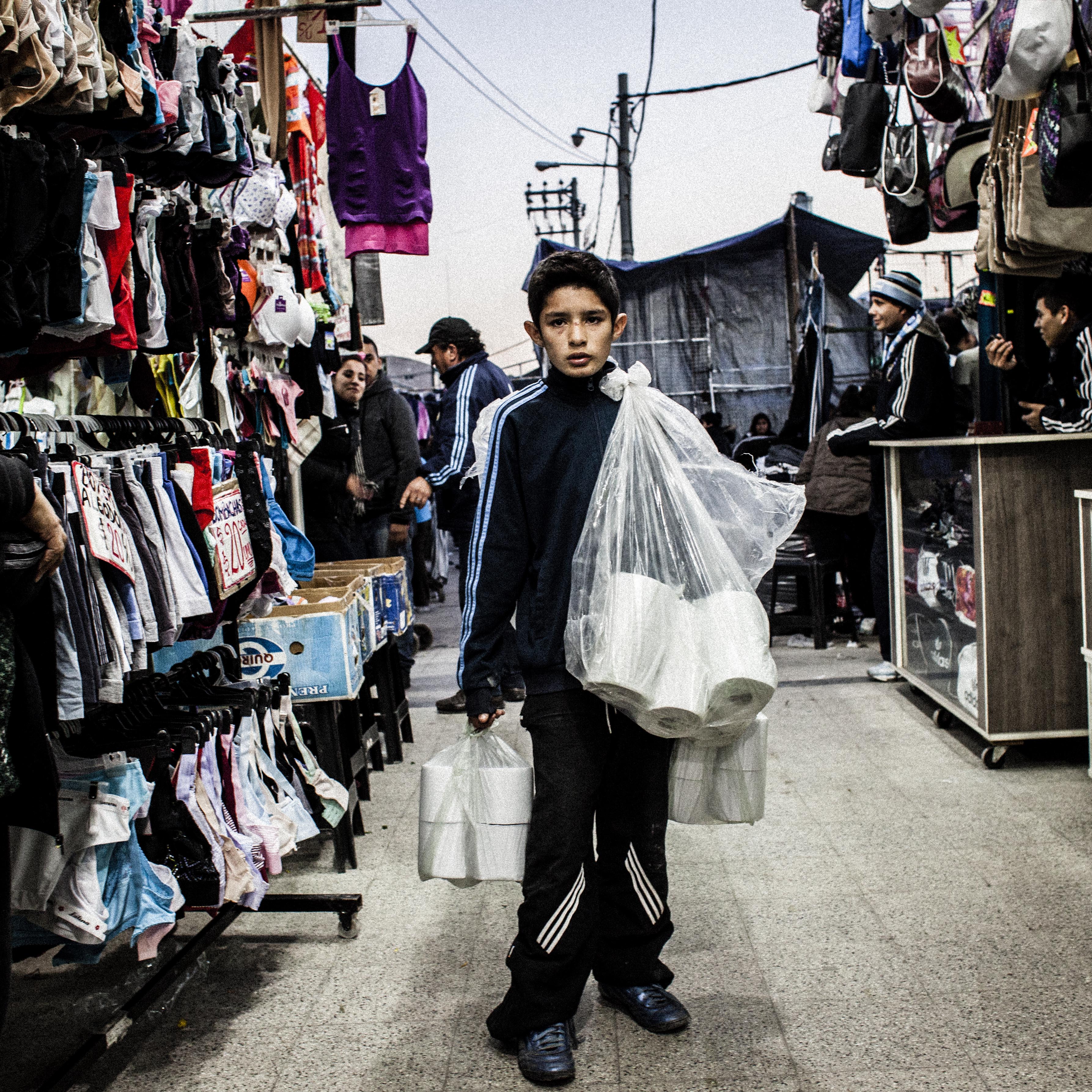
© Picture by Sarah Pabst
All of this was shocking, but hardly unexpected. However, what we had certainly not expected to find when researching sweatshops was the incredible energy that permeated La Salada. What was for us the first link in a nationwide supply chain based on sweated labour, was for thousands of entrepreneurs, stallholders and buyers the “center of the world.” In interviewing and photographing La Salada workers like Juan, we saw and heard time and again the echoes of a generalized positivity. What we could not see was where it came from.
It was another of our interviewees, Ignacio, who solved the mystery. A former member of the Argentine secret service, Ignacio has found a new role in La Salada’s private security team. For several years now, he has been coming to La Salada for each of the three market days per week to patrol his patch of the 18-hectare site, located just beyond the southern limit of Buenos Aires City. Today, La Salada is a ramshackle collection of three large sheds and myriad residential streets, where former homes have been converted into storage warehouses, and roads are permanently occupied by wire-mesh stalls. Usually a rather taciturn interview subject, Ignacio’s reaction when we asked him about the future of La Salada was remarkable. Becoming increasingly animated, he described with obvious excitement how the partially built second story of one of the sheds would not only be completed, but a further three floors would be constructed on top. This five-story shopping mall would have a central column of working escalators, like the legal malls in downtown Buenos Aires. It would be an example of success for the whole country! As he spoke, the reason for La Salada’s frenetic activity became clear: hope. Ignacio was following the American Dream like anyone else, but the way to it was through an informal and illegal marketplace.
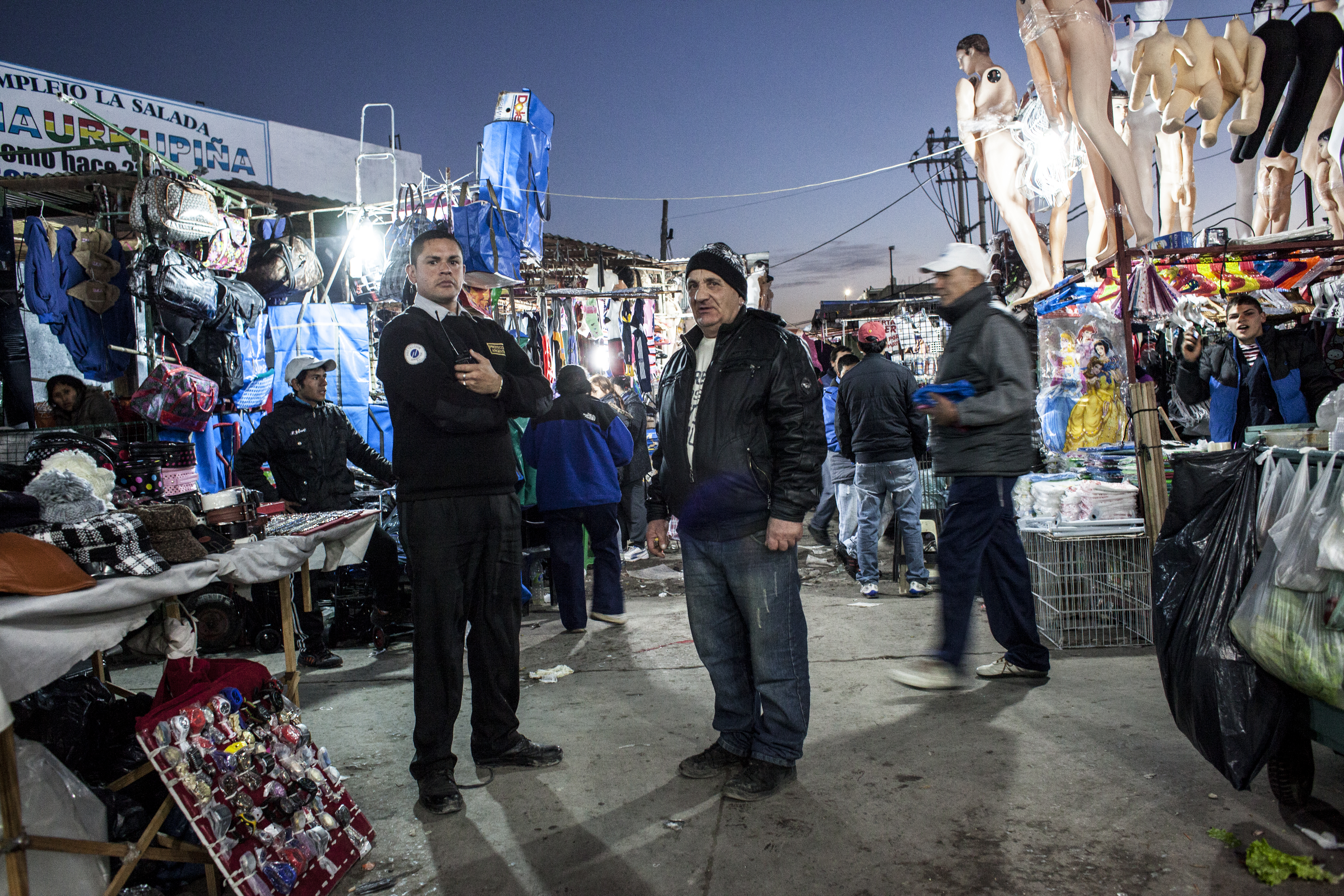
© Picture by Sarah Pabst
Juan, too, was hopeful. After being thrown out of his uncle’s sweatshop, he and his family founded their own clothing business. He now rents a stall at La Salada three days per week, spending another three days cutting and sewing in his home sweatshop. Like the buyers, Bolivian migrant Juan is not local to Buenos Aires either. However, Juan’s six-day week means that he and his family are now tied to the city and must rely instead on the mobility of their clients. Their hope is that one day all the hard work will be rewarded with enough wealth and security to be able to leave the city for a week’s holiday, and to buy their own house in a better neighborhood. Their inspiration is Buenos Aires’ middle class, people used to holidays and home ownership, and visiting regular shopping malls to buy clothes that are partly manufactured in illegal sweatshops, and partly in what is left of the legal garment industry.
In the 1980s, domestic garment production in Argentina was all but wiped out when innovations in communications and technology, commercial agreements and neoliberal policies, migration flows and cheaper transport decimated the sector. As the factories disappeared to take advantage of cheaper labor in Asia, thousands of Argentines were left without formal employment and forced to find work in the informal sector.
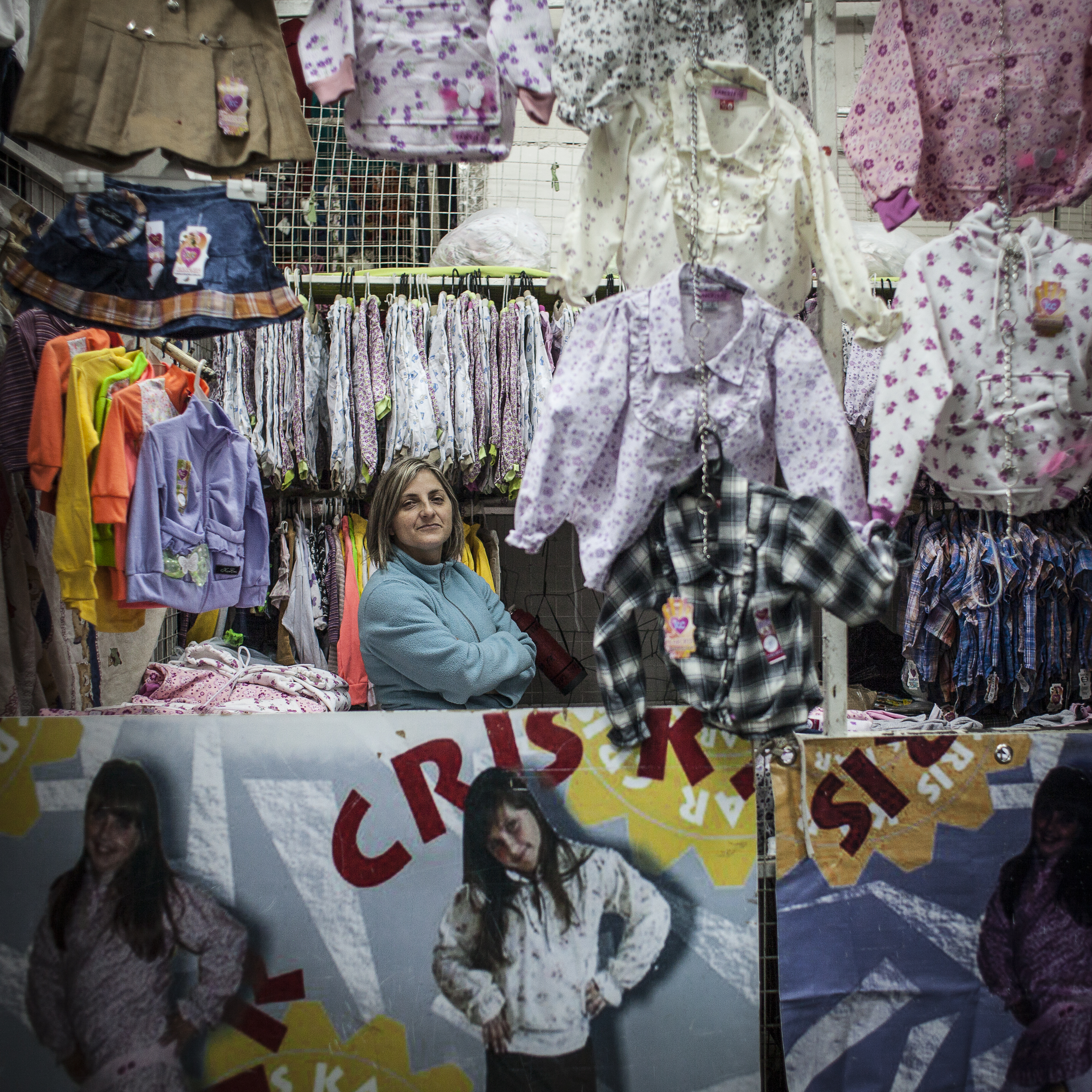
© Picture by Sarah Pabst
When we got to know Juan, we met him on his market stall at La Salada, piled high with counterfeit Adidas clothing. He proudly explained that he designs and produces everything himself in his home workshop. According to our research, the 8,000 stalls like Juan’s at La Salada are sourced by some 31,000 sweatshops. But far from the huge Asian factories that we first had in mind, these were small workshops run from people’s back rooms and rarely “employing” more than 20 people. As in Juan’s case, many of these “employees” are in fact family members who receive no wages, but share in whatever profits—or losses—the business makes. The marketplace is dangerous, as Juan and Ignacio both attest. Thieves target the unwatchful stallholder (Juan once had a week’s worth of produce stolen as his back was turned for a moment), and a wide variety of criminal gangs and professional tricksters keep the security personnel busy. Again, we asked ourselves how people could be so hopeful in this environment.
It took several months of working with Juan at his stall to earn an invitation to visit his workshop. When we did, it was both a lesson in the variety of dangers such workers face, and the lengths they must go to in order to protect themselves in such conditions of distrust. Even after those months of working together, Juan was still wary that we might be undercover police officers. To test his theory, he gave us a false address, which led us on a treasure hunt through some of Greater Buenos Aires’ more dangerous districts. Eventually, Juan gave us his real address, our dedication seeming to prove to him that we were neither covert cops nor spies looking to tip off his rivals.
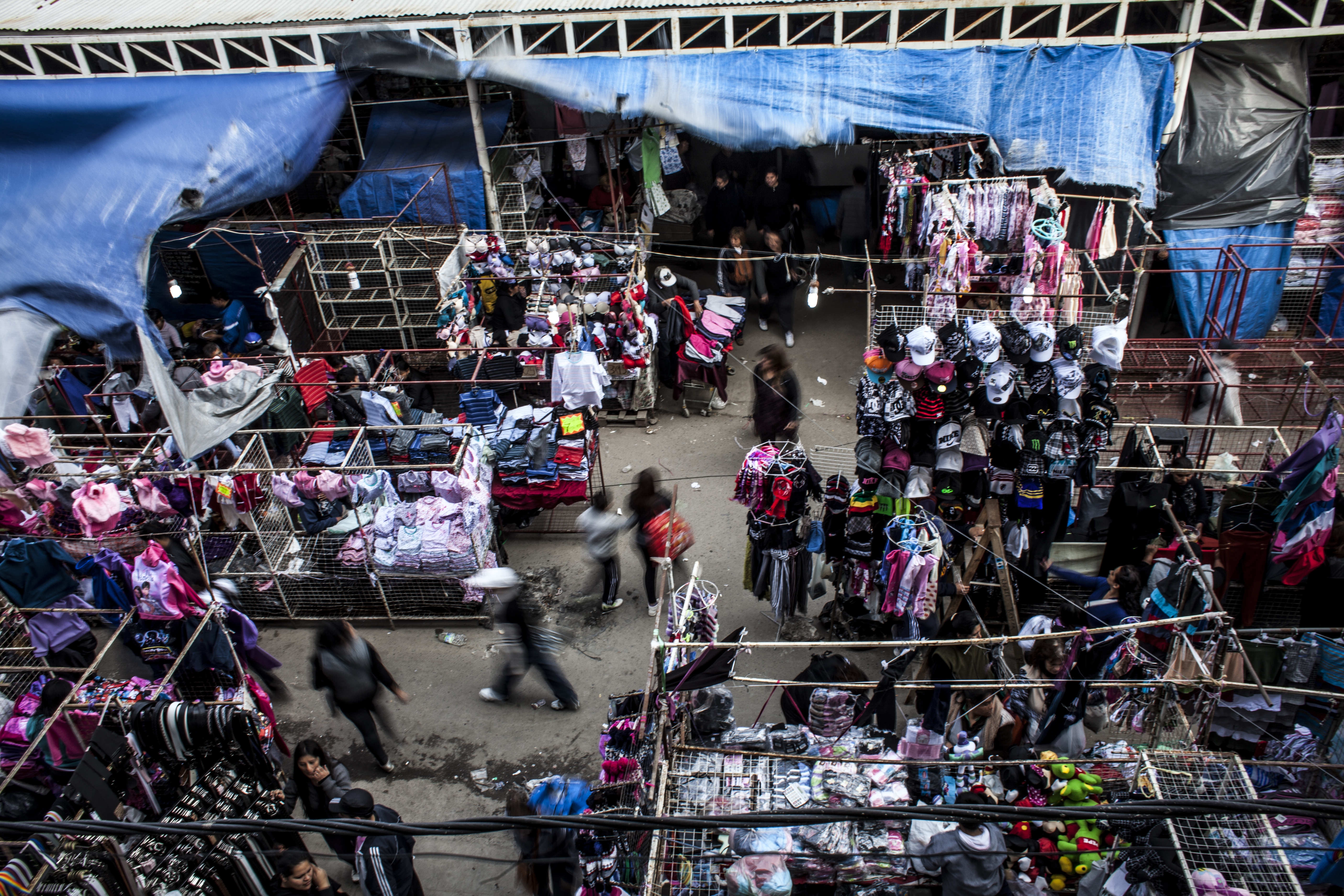
© Picture by Sarah Pabst
What we found when we finally arrived was an oasis of hope. Though there was always the danger of police raids (workshop owners tried to eliminate competition by alerting the authorities to their rivals’ locations), the surprisingly modern and well-equipped workshop was a place for Juan and his family to let their imaginations run free. Together with his mother, father, brother and sister, he reveled in the creative process of designing and making new garments, and dreamed up new schemes to make enough money to climb the social ladder—as well as the garment stall at the marketplace, the family planned to open a materials shop to sell zips, buttons and other essentials to other sweatshop owners. Everyone in the chain broke myriad labor and tax rules, and often produced counterfeit garments infringing on copyright law, like Juan’s homemade “Adidas” goods. Earning a living in this context of illegality and informality meant being locked into a never-ending cycle of pattern-cutting, sewing, selling and coordinating with other sweatshops. It was easy to see why Juan thought himself a “slave”. Yet behind it all was hope: by selling counterfeit clothing manufactured in illegal sweatshops, La Salada workers hope to gain access to material wealth and social recognition.

© Picture by Sarah Pabst
La Salada also provides hope to the buyers, both the wholesalers who come to Buenos Aires, and the thousands of poorer households for whom the wholesalers are their only access to clothing. The shopping malls that Ignacio is so keen to emulate have pushed clothing prices beyond what many Argentines can afford. Price rises are also due to the country’s legal garment manufacturers making a “flight to quality”, more expensive garments being the only niche in which they could compete with low-cost Asian imports. Now that protectionist policies have stemmed the tide of such imports, La Salada marketplace has been able to fill the gap and provide affordable aspirational goods to lower- and middle-income families. The human cost of this is the deplorable conditions experienced by the sweatshop workers, describing themselves as “slaves” to the market whilst at the same time holding the unshakable belief that it provides the key to a better future. This future, however, is notable for the fact that La Salada no longer features in it: none of the interviewees we spoke to want the same life for their children. And so the sustainability of the garment economy centered on La Salada is in doubt—the hope that sustains the current generation will surely not sustain the next. However, even if Juan does manage to climb the social ladder, there are still enough people below him to take his place: in Argentina and Bolivia alike, there are many for whom sweated labor still represents a step up.
For the Mobile Lives Forum, mobility is understood as the process of how individuals travel across distances in order to deploy through time and space the activities that make up their lifestyles. These travel practices are embedded in socio-technical systems, produced by transport and communication industries and techniques, and by normative discourses on these practices, with considerable social, environmental and spatial impacts.
En savoir plus x
Southern Diaries by Forum Vies Mobiles are licensed under a Creative Commons Attribution-NonCommercial-ShareAlike 3.0 France License.
Permissions beyond the scope of this license may be available at contact.
Other publications